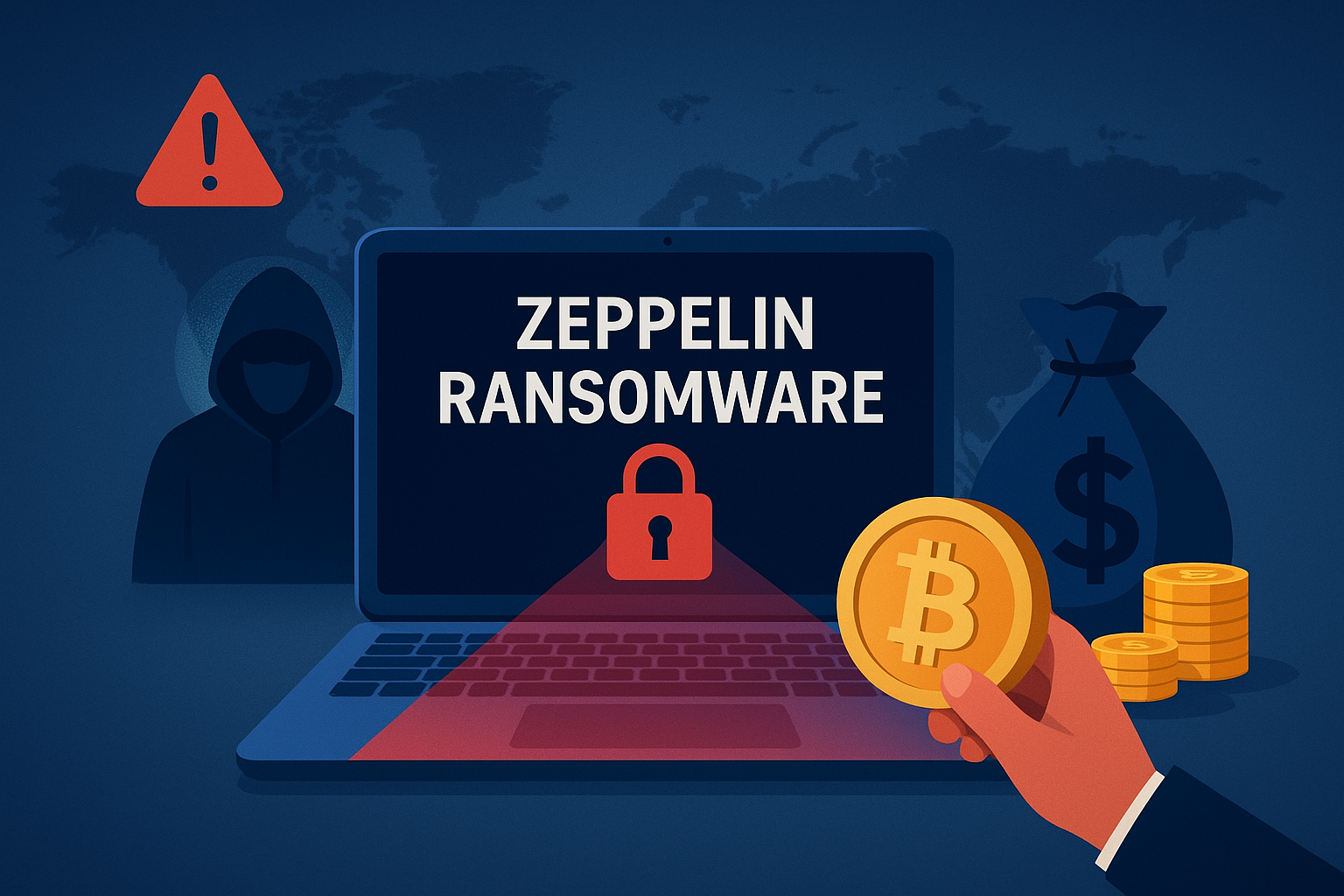CES 2026: How Emerging Technology is Shaping the Year Ahead
An expert breakdown of CES 2026, exploring how robotics, intelligent devices, and next‑gen computing are shaping technology and professional workflows in 2026.

Zeppelin ransomware has disrupted industries worldwide. Learn how ransomware gangs operate and the key strategies businesses can use to defend against these evolving cyber threats.
Cyberattacks are no longer random or isolated events. They have become organized, highly profitable, and devastating to businesses across the world. Among the many types of attacks, ransomware has emerged as one of the most dangerous. One strain that made headlines is Zeppelin ransomware, which has been used to extort millions of dollars from victims.
This article will explain what Zeppelin ransomware is, how ransomware gangs operate, and what businesses can do to protect themselves from becoming victims.
What is Zeppelin Ransomware
Zeppelin ransomware is a malicious software program that encrypts files on a victim’s computer or network and demands payment in cryptocurrency to restore access. First detected in late 2019, Zeppelin is part of the VegaLocker ransomware family, but it quickly gained its own reputation for precision targeting and advanced features.
Unlike generic ransomware that spreads to anyone it can infect, Zeppelin was often deployed in highly targeted attacks. Healthcare organizations, technology companies, and education providers were some of its most common victims.
Key characteristics of Zeppelin ransomware
The impact of Zeppelin was significant. Victims faced prolonged downtime, major financial losses, and the potential exposure of sensitive information. In 2025, the U.S. Department of Justice seized over 2.8 million dollars in cryptocurrency from an alleged Zeppelin operator, showing that even advanced cybercriminals are not untouchable.
How Ransomware Gangs Operate
To understand Zeppelin, it helps to look at the bigger picture. Ransomware groups today run their operations like businesses. They have divisions for development, marketing, customer support, and finance. Some even run Ransomware-as-a-Service (RaaS) models where affiliates can rent the malware and share profits with the developers.
Step 1: Gaining access
Attackers use several methods to break into systems, including:
Step 2: Moving through the network
Once inside, attackers move laterally through the network. They escalate their privileges, disable security tools, and identify critical systems. During this stage, they often steal sensitive data before encrypting it.
Step 3: Launching the attack
The ransomware is then deployed. Files and systems are locked, and a ransom note is delivered. Victims are instructed to pay in cryptocurrency, with deadlines attached to increase pressure.
Step 4: Double extortion
Modern ransomware gangs like those behind Zeppelin do not just lock files. They also exfiltrate sensitive data and threaten to publish it on dark web forums. This tactic is designed to push victims into paying even if they have backups.
Step 5: Laundering the money
After collecting payments, attackers need to hide their tracks. They typically use:
These steps have made ransomware one of the most profitable types of cybercrime, fueling a global criminal economy worth billions of dollars.
What Businesses Can Do to Protect Themselves
Ransomware may sound unstoppable, but there are practical steps businesses can take to reduce their risk and improve their resilience.
1. Strengthen cybersecurity hygiene
2. Train employees to spot phishing
Employees are often the first line of defense. Regular training helps them recognize suspicious emails, attachments, and links. A single click can open the door to an attacker, so awareness is critical.
3. Implement zero trust security
The zero trust model assumes that no device or user should be trusted by default. Continuous verification and strict access controls limit the ability of attackers to move freely inside a network.
4. Maintain backups
Backups are a business’s safety net. Keep multiple copies of critical data stored securely offline. Test them regularly to make sure they can be restored quickly if needed.
5. Develop an incident response plan
Preparation is key. Have a clear plan that defines roles, responsibilities, and procedures in the event of a ransomware attack. Run tabletop exercises to ensure the team knows how to respond under pressure.
6. Work with law enforcement and cybersecurity experts
If attacked, businesses should contact law enforcement and consult cybersecurity experts instead of immediately paying a ransom. Payments do not guarantee recovery and may encourage further attacks.
7. Consider cyber insurance
Cyber insurance can help cover costs such as data recovery, downtime, and legal fees. However, it should not replace preventive security measures.
Final Thoughts
Zeppelin ransomware is just one example of how far ransomware gangs have come in sophistication and impact. These groups operate like businesses, and their attacks can cripple organizations of any size.
The good news is that businesses are not powerless. By combining strong cybersecurity hygiene, employee training, zero trust architecture, backups, and incident response planning, organizations can reduce their risk dramatically.
Cybersecurity is no longer just a technical issue. It is a business priority that protects operations, revenue, and reputation. The lesson from Zeppelin is clear: criminals will continue to evolve, but businesses that stay proactive and resilient can stay one step ahead.
An expert breakdown of CES 2026, exploring how robotics, intelligent devices, and next‑gen computing are shaping technology and professional workflows in 2026.
Comprehensive guide to using AI tools for content creation, marketing automation, and audience engagement. Discover practical strategies for SEO optimization, social media management, and maintaining brand authenticity while scaling content production.
